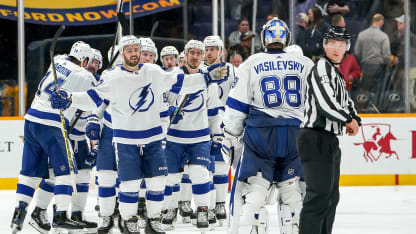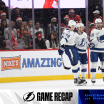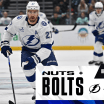How They're Playing:Would the Lightning liked to have banked more than 11 points over the past 10 games? Of course. They left some points on the table in games 21-30 - mostly in home contests. The Lightning went 2-0-1 on the road in this 10-game segment, but just 3-4-0 at home. Still, as the players and coaches have expressed recently, they feel as though they're playing, generally, good hockey.
It's true that they've made some costly mistakes, errors that they have to own. Against Minnesota, they struggled with the all-important shift after a goal. They had two poorly-executed line changes in their loss to Carolina. Some isolated puck management issues led to crucial opposition goals against St. Louis, Washington, and the Islanders.
But those have been either intermittent errors or short lapses within games. As a whole, the Lightning are executing well. Specifically, they're playing very hard and consistently bringing a high compete-level to the ice. As a result, they've won lots of puck battles. This has led to plenty of puck possession. Sometimes, that hasn't translated to a victory. In many of their recent losses, opposition goalies have neutralized their possession advantage. Or the other team has defended well without the puck.
Still, the building blocks for success are there. And they were a key component to their 21-30 segment wins over Buffalo, Nashville, San Jose, Florida, and Boston. If they continue to play with the same level of urgency, they'll get rewarded more often than not.



















